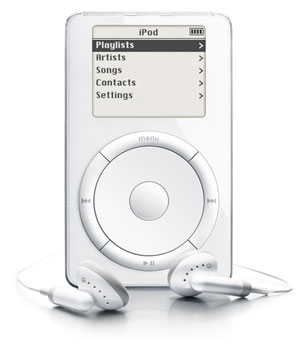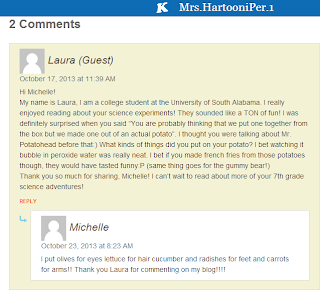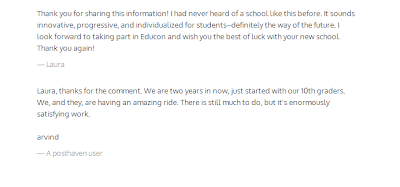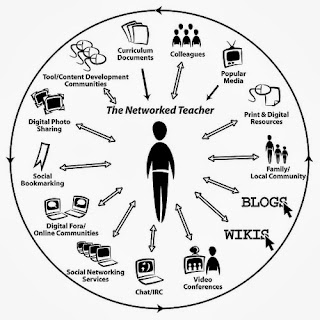Sir Ken Robinson: “Changing Education Paradigms”
written by Laura Crawford
Ken Robinson begins his talk “Changing Education Paradigms” by suggesting two reasons every country on the planet is changing their education system. The first is economic; the question being “how do we educate our children to take their place in the economies of the 21st century?” The second reason is cultural. Ken Robinson states that every country on earth is trying to figure out how to educate children so they have a sense of cultural identity while being a part of the process of globalization. The problem seems to begin with the roots of the current education system. Ken Robinson says that the current system of education was designed and conceived and structured for a different age—the enlightenment and the industrial revolution. The Enlightenment view of intelligence was really an equation in and of itself: capability of deductive reasoning is completely equivalent to academic ability. This system leaves otherwise brilliant people under the impression that they are dumb and stuck in their lower-paying jobs. Ken Robinson then suggests that these twin pillars (economic and intellectual) create chaos for most people. Furthermore, Sir Robinson addresses the issue of ADHD—an epidemic that he claims isn’t really an epidemic. Ken Robinson claims our children are living in the most intensely stimulating period in the history of the earth. What’s interesting is that the instances of ADHD have positively correlated with the increase of standardized testing. Sir Robinson points out that in America, ADHD increases as you go east. What decreases as you go east is the funding for the arts. Robinson states: “the arts are the victims of this mentality”. Arts emphasize the aesthetic appeal—the parts of the brain that are equally stimulated by the media, video games, and advertising surrounding students today. The arts are battled, however, mostly by anesthetics (the medication prescribed for ADHD) that deafen the brain to these stimulating experiences. Ken Robinson states that children are readily “medicated as routinely as we had our tonsils taken out”. His next point of emphasis was the assembly-line mentality taken in schools toward education. He asks “why is their age the most important thing?” and really hits the idea with his comedic comment: “it’s like their date of manufacture”. This production line mentality is conforming students through standardization (of tests, scores, grades, etc.). Ken Robinson seems to be a proponent of divergent thinking, which is frequently confused with creativity but isn’t. Sir Robinson suggests that divergent thinking is actually an essential capacity of creativity. He defines it as “the ability to see many possible answers to a question, of interpreting a question” Basically, thinking more relation-ally than linearly. Sir Robinson supports this idea of education with empirical evidence from a longitudinal study. The study encouraged kindergarten children to answer questions with as many possibilities as they could conceive, instead of enforcing this idea that there is only one answer in the back of the book. The study basically concluded that as we age, we lose the capacity to see multiple possible solutions to a problem. We are taught that there is only one answer and that is what we assume to believe. Ken Robinson closes his talk with the four things we need to solve before education systems will improve. First, we have to think differently about human capacity for knowledge. Second, we have to recognize the academia myth. Third, we have to recognize that kids learn best collaboratively and we should not isolate them and judge them separately. The final is the recognition of the habits of institutions and the habitats that they occupy.
"How to Escape Education's Death Valley"
Written by Caitlin Hinton

In this TED talk about education, Ken Robinson talks about how to escape educations death valley. Ken Robinson, who is a native of England, opens with the a joke about Americans not understanding irony. He then goes onto say that whoever came up with the title “No Child Left Behind,” clearly understands irony. He says that the legislation of “No Child Left Behind,” is actually leaving millions of children behind. In some parts of the country 60% of students drop out of school, but this is just the tip of the iceberg. The dropout crisis does not include the students who are actively in school but are completely disengaged from school. Robinson delivers three ways in which the human life flourishes and they are contradicted by the culture of education. The first being, human beings are naturally different and diverse. Robinson gives the illustration that if you have two children, more than likely they are completely different from one another. He states that education under “No Child Left Behind,” is not based on diversity, but conformity. Schools are encouraged to find out what students can do across a very narrow spectrum of achievement. Education should be well dispersed and equal throughout all subjects. Children prosper best with a broad curriculum that celebrates their various talents. The second principle by which human life flourishes is curiosity. Robinson says that if you can light the spark of curiosity in a child they will learn without any further assistance in most cases. Curiosity is the engine of achievement. Education is about learning and if there is no learning going on then there is no education. The role of a teacher is to facilitate learning. Robinson proposes that one of the problems is that the culture of education focuses not on teaching and learning but on testing. Testing should support learning not obstruct it. In place of curiosity is a culture of compliance. The third principle is that human life is inherently creative. Humans can create and recreate their lives. Education is supposed to awaken the powers of creativity but instead we have a culture of standardization. So with these three principles in mind, how do we escape educations death valley? Simply put, we bring to life what lies dormant in our students. We foster our students diversity, curiosity, and creativity. The education system is not a mechanical system, it is a human system. We must create a climate of possibility and by doing that our students will rise and flourish.
"The Importance of Creativity"
Written by Ashley Railey
Ken Robinson begins his lecture by explaining how children have extraordinary capacities for innovation. He believes that each child has an individual creative talent that teachers (or adults in general) ignore. Robinson says, “My contention is that creativity now is as important in education as literacy, and we should treat it with the same status.”
Robinson continues his lecture with a few humorous jokes that keep the audience, and myself, laughing. He tells the story of his four year old son being in The Nativity Play when he was four. When the play begins, three four year boys come out as the kings who offer Jesus gold, myrrh, and frankincense. The first boy says, “I bring you gold”; the second boy says, “I bring you myrrh”; and the third boy says, “Frank sent this.” The point of his story is that children aren’t afraid of being wrong. This isn’t to say that being wrong is the same as being creative. Robinson states, “If you aren’t prepared to be wrong you will never come up with anything original.” By the time most children are adults they have developed a fear of being wrong. When education sells that mistakes are the worst thing a child can do, the result is that we are educating people out of their creativity.
Robinson explains how the current state of education models students to become college professors. Our society only focuses on math, science, and literacy. This only allows for the few students who are gifted in these areas to succeed.
I thought Robinson’s lecture was very entertaining and insightful. Personally, I don’t have a creative bone in my body, but I do appreciate art and literature. Our education system should embrace each child’s creativity. When students are learning about what they love, it provides them with more resources for a successful future.
Robinson ends his lecture with this powerful statement, “I believe our only hope for the future is to adopt a new conception of human ecology. One in which we start to reconstitute our conception of the richness of human capacity. Our education system has mined our minds in the way that we’ve stripped mined the Earth looking for a particular commodity, and for the future it won’t service.”






















